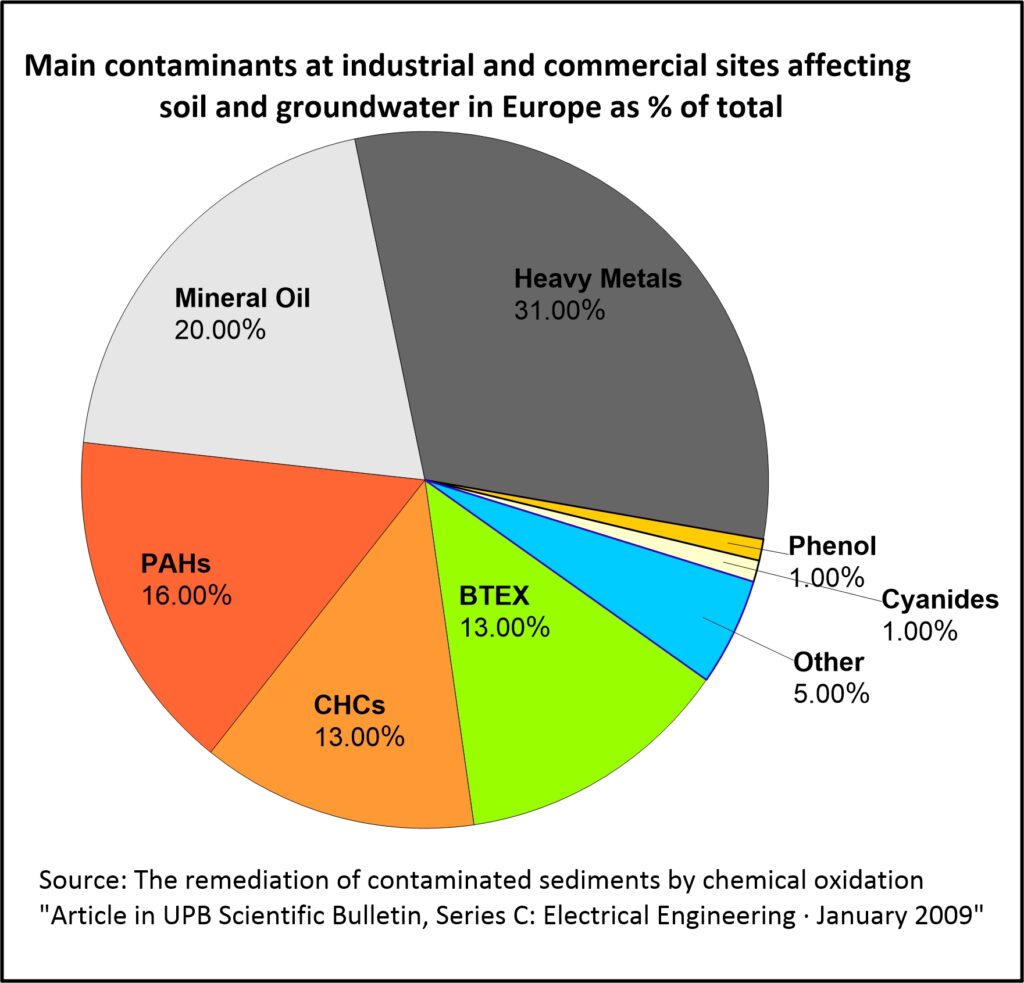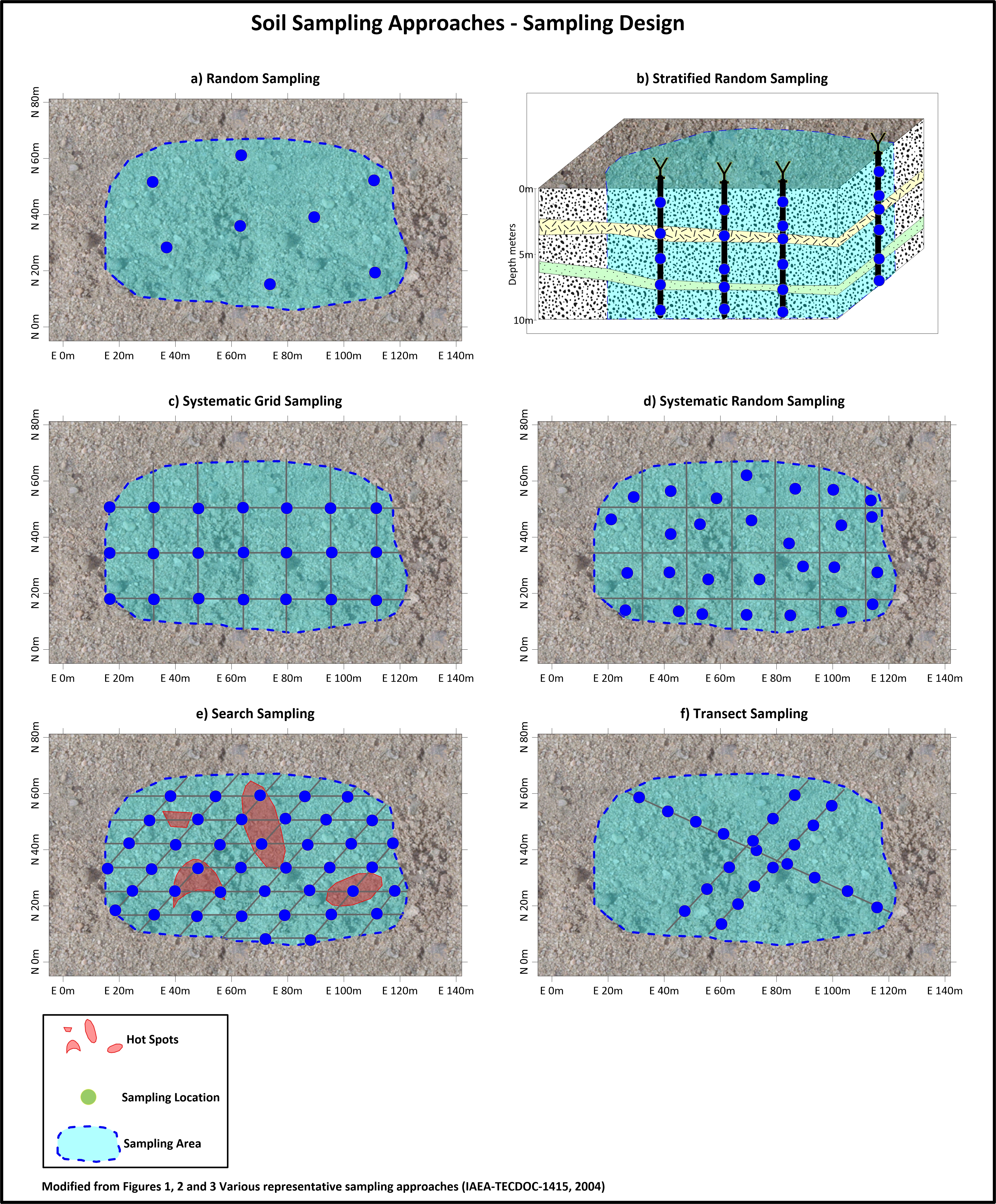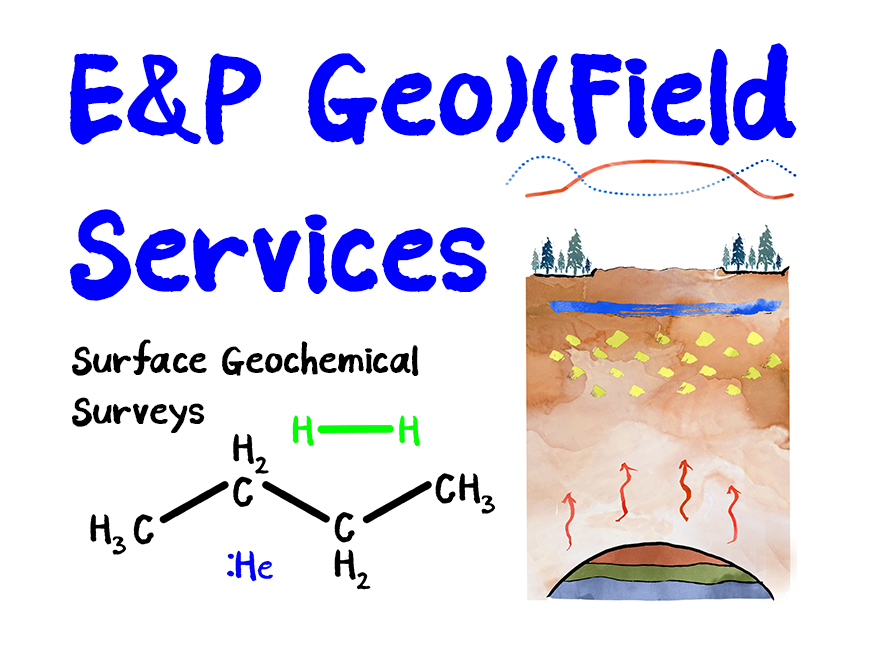Surface Geochemical Surveys for Polluted lands / Soils / Groundwater
Services
- Survey Design
- Analytical Program
- Fieldwork – Sampling
- Analytical Work through preferred laboratory
- Analytical Interpretation and Reporting

The successful completion of investigations, monitoring, and remediation projects requires the use of appropriate sampling techniques and sampling design.
Our expertise lies not only in soil and groundwater sampling and analytical interpretation of Surface Geochemistry in both the Oil and Gas industry and the environmental industry, (Table-1 below lists selected soil sampling surveys for polluted Sites, most are associated with abandoned oil / gas well sites – drill sites), but it includes Geophysical techniques such ground penetrating radar (GPR), magnetometry and electrical resistivity, that can be applied for screening to help with the delineation of contaminated areas areal and underground extend.
Table-1
Year – Country – Analysis
- 2010 – Sweden – Soil Gases
- 2010 – Turkey – Soil Gases, X-ray fluorescence
- 2010 – Malaysia-Sarawak – Soil Gases, X-ray fluorescence
- 2010 – Indonesia-South Sumatra – Soil Gases, X-ray fluorescence, Soxhlet Extractions for GCMS
- 2011 – Malaysia Sarawak – Soil Gases, X-ray fluorescence
- 2011 – Indonesia-Sulawesi Tenggara – Soil Gases, X-ray fluorescence
- 2012 – Republic of Congo – Soil Gases, X-ray fluorescence
- 2015 – Malaysia Sarawak, Sabah – Passive Soil Vapor, X-ray fluorescence
- 2016 – Nigeria – Soil Gases, X-ray fluorescence, Soxhlet Extractions for GCMS
- 2016 – Iran – Soil Gases, X-ray fluorescence
- 2016 – Iran – Soil Gases, X-ray fluorescence
- 2017 – OMAN – Passive Soil Vapor, X-ray fluorescence
- 2018 – Nigeria – Soil Gases, X-ray fluorescence
- 2018 – Namibia – Soil Gases, X-ray fluorescence
- 2018 – Namibia – Soil Gases, X-ray fluorescence
- 2019 – Indonesia – Soil Gases, X-ray fluorescence
- 2019 – Somaliland – Passive Soil Vapor, Soil Gases, X-ray fluorescence, Soxhlet Extractions for GCMS
- 2020 – Iran – Soil Gases, X-ray fluorescence
- 2020 – Iran – Soil Gases, X-ray fluorescence
- 2021 – Iran – Soil Gases, X-ray fluorescence
- 2021 – Iran – Soil Gases, X-ray fluorescence
- 2021 – Namibia – Passive Soil Vapor, X-ray fluorescence
- 2022 – Iran – Soil Gases, X-ray fluorescence
- 2022 – Malaysia – Soil Gases, X-ray fluorescence
- 2023 – Nigeria – Soil Gases, X-ray fluorescence, Soxhlet Extractions for GCMS
Defining Polluted lands / Soils / Groundwater
Basically, a site (land or soil) is polluted when a substance that is not present in the soil’s natural state is detected in the soil in such concentrations which affect or leads to affect the use of the land and the role of the soil in the ecosystem. Polluted Lands, Surface and Groundwater by current or former activity pose threats to human health, to biodiversity, crop production, the ecosystem environment in general.
Soil pollutants are diverse in their nature and occurrence. Major pollutants – organic and organic in origins – are heavy metals, hydrocarbons, oil products, and agrochemicals. Figure-1 below shows the percentages (as % of total) of the main contaminants found in industrial and commercial sites or lands.

Figure-1 Pie Chart of Main Contaminants at Andustrial and Commercial Soil and Groundwater in Europe
Common Soil Sampling Desings (Approaches) and Techniques
The most common sampling survey designs (approaches) for collection of representative soil samples as explained by the International Atomic Energy Agency, IAEA, (IAEA-TECDOC-1415, 2004) are:
- Random.
- Stratified Random.
- Systematic Grid.
- Systematic Random.
- Search.
- Transect Sampling.
- And Judgmental Sampling – It is the subjective selection of sampling locations at an area of investigation, based on visual inspection, gathered historical information, and on best professional judgement of the sampling technitian.

Figure-2 Various Representative Soil Sampling Design Approaches, Modified from IAEA-TECDOC-1415, 2004
Some of the most common sampling techniques are:
Shallow Soil Samples – Collection of soil samples from 10 to 20 cm or samples at different depths. Tools – shovels, hand augers, powered drills. Samples vary from a few grams to larger amounts; samples are preserved in uncontaminated Ziplock bags or glass flasks.
Deep Soil Samples (core samples) –Collection of core or sediment samples from 20cm to +1m, samples are collected at different depths. Tools – hand augers, powered drills. Samples vary from a few grams to larger amounts; samples are preserved in uncontaminated Ziplock bags or glass flasks.
Passive Soil Vapor – uses in-ground samplers (Passive sorbent samplers); 2 to 3 weeks residence sampling. The samplers are removed and placed in uncontaminated bags and sealed for transportation to the laboratory. Passive Soil Vapor provides quantitative data to sample for VOCs and SVOCs in soil gas, indoor air, and ambient air.
Interstitial Gases or “Soil Gases” – (gases and vapors that are present in the intergranular spaces of the subsoil). Tools – Soil Probes, samplers. The method involves driving a 1.25 cm diameter rod into the ground to a depth of about one meter. A gas sample is removed from the hollow probe via a syringe and injected into an evacuated gas-tight container. Later, the sample is removed from the container and injected into a gas chromatograph / Mass Spectrometer or Analyzer and analyzed.
In Situ Measurements – Another approach for spot surface soil-gas sampling is to drill the soil and couple a portable analyzer for In Situ Measurements, or X-ray Fluorescence Spectrometers, X-ray fluorescence is used to measure concentrations of heavy metals and trace elements (As, Pb, Cu, Mn, Zn, Ni, Fe). Screening surveys can be done with portable x-ray fluorescence spectrometers, or soil samples can be analyzed at the laboratory.
